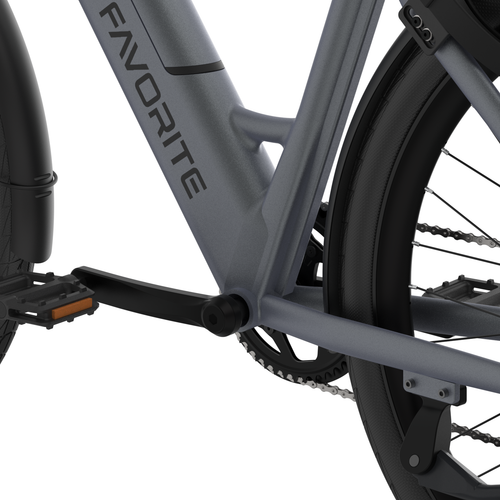
Exploring E-Bike Sensors: Torque vs Cadence - The FavoriteBikes Perspective
When it comes to electric bikes, one of the key factors that affect the overall riding experience is the type of sensor used to control the motor's power output. In this blog post, we'll explore the differences between torque sensors and cadence sensors, and discuss the advantages of each system for e-bike enthusiasts.
Torque Sensors: What Are They and How Do They Work?
A torque sensor, also known as a force sensor, measures the amount of force applied to the pedals by the rider. It then sends a signal to the e-bike's controller, which adjusts the power output of the motor accordingly. This results in a more natural and responsive feel, as the motor's assistance level is directly proportional to the rider's pedaling force.
Advantages of Torque Sensors
- Natural Riding Experience: Torque sensors offer a seamless integration of motor power and rider effort, creating a smoother and more intuitive ride. This makes it feel as though you're riding a regular bike, but with an added boost.
- Efficiency: Since the motor's power output is adjusted based on the rider's effort, torque sensors can help conserve battery life and ensure efficient use of energy.
- Performance: E-bikes with torque sensors are known for their excellent hill-climbing capabilities and responsiveness to changes in terrain, making them ideal for those who want a more dynamic and engaging riding experience.
Cadence Sensors: What Are They and How Do They Work?
Cadence sensors, also called speed sensors, detect the rider's pedaling speed (or cadence) and activate the motor when a certain threshold is reached. The motor assistance level is generally pre-set and does not adjust based on the rider's pedaling force.
Advantages of Cadence Sensors
- Affordability: E-bikes with cadence sensors are generally more affordable than those with torque sensors, making them a great option for budget-conscious consumers.
- Simplicity: Cadence sensors provide a more straightforward riding experience, as the motor assistance kicks in at a set pedaling speed. This can be appealing to those who prefer a predictable level of support from their e-bike.
- Ease of Use: For riders who may have physical limitations or simply want a more relaxed ride, cadence sensors offer a consistent level of motor assistance without the need for strong pedaling force.
Conclusion
Both torque and cadence sensors have their unique advantages, and the choice between them ultimately depends on your personal preferences and riding needs. If you're seeking a natural, responsive, and engaging ride, a torque sensor may be the ideal choice. On the other hand, if you prioritize affordability, simplicity, and a more relaxed experience, a cadence sensor could be the perfect fit.
By incorporating both torque sensor and cadence sensor-like features in their customizable riding settings, FavoriteBikes offers the advantages of both systems in a single e-bike. This innovative approach allows riders to experience the natural, responsive feel of a torque sensor system and the ease of use and simplicity of a cadence sensor-like system, depending on their preference.
This level of adaptability and customization makes FavoriteBikes a versatile and user-friendly option, catering to a wide range of riders with varying needs and desires. By combining the benefits of both systems, FavoriteBikes sets itself apart from competitors and enhances the overall e-bike experience for its users.
No comments










0 comments